Webdossier: Spelen - Play
Spelen is een essentieel element van onze cultuur, het ligt er aan ten grondslag.- Johan Huizinga
Spel is de hoogste vorm van onderzoek.
- Albert Einstein
Spel begint als mensen hun primaire behoeften hebben bevredigd, en staat daardoor aan de basis van alle cultuur, schreef de Nederlandse socioloog Johan Huizinga in 1938 in zijn dissertatie Homo Ludens. ‘Voor Huizinga stond vast dat de mens een homo ludens is, een spelende mens. Uit die gedachte vloeide de basisstelling dat alles wat wij mensen "cultuur" noemen voortkomt uit spel, en zich ook verder ontwikkelt als spel. Als de mogelijkheid tot spelen onder druk komt te staan, is dus de hele cultuur in het geding'.
Spelen is het aanleren van vaardigheden, het ontladen van spanning door plezier, het nemen van risico en het leren omgaan met teleurstelling. Maar het spel is ook gewoon een spel, en dus van betekenis omdat het juist niet al te veel belangen dient. Spel kan ons weerbaarder maken tegen onverwachte ontwikkelingen in de maatschappij. Spelen zien wij bij Stroom als een manier om de wereld te lezen, en te verbeelden.
Er zijn verschillende (historische) voorbeelden uit de beeldende kunst en architectuur, waarin het spel wordt gebruikt als een soort tegengif tegen de conventionele, hiërarchische en gereguleerde consumptiemaatschappij waarin we leven.
We kunnen veel opsteken van hoe kinderen denken, kijken en spelen. Het spel van kinderen confronteert ons met hoe wij onze samenleving vormgeven, hoe we steden inrichten, hoe we kinderen opvoeden en onderwijzen: vaak met structuur, regels, bescherming en controle, met nietszeggende of allesbepalende ruimtes, en zonder al te veel stimulans om zelf op avontuur te gaan.
Dat kan anders! Wat kan een cultuur van spelen betekenen voor stad en samenleving?
Johan Huizinga Homo Ludens
In dit boek gaat het Huizinga niet alleen om de betekenis van het spel als cultuurverschijnsel, maar ook om het 'ludieke' als wezenlijk kenmerk van de menselijke beschaving. Dit gegeven werkt hij uit in beschouwingen over bijvoorbeeld taal, rechtspraak, oorlogvoering, filosofie, kunst en sport. Huizinga toont op briljante en onnavolgbare wijze dat de homo sapiens in wezen altijd een homo ludens is geweest.
http://dbnl.nl/tekst/huiz003homo01_01/huiz003homo01_01.pdf
De mens blijft lekker spelen, Coen van Beelen interviewt Huizingakenner Léon Hanssen
Trouw, 13 januari 2014
https://www.trouw.nl/home/de-mens-blijft-lekker-spelen~a1f6795b/
Vals spel door Roos van Lint
In 1938 beschreef Johan Huizinga het spel als oorsprong van alle cultuur en zag tegelijkertijd het spelen in zijn tijd hard achteruitgaan. Pas op voor valsspelers en spelbrekers.
De Groene Amsterdammer 27.07.2017
https://www.groene.nl/artikel/vals-spel
Aldo van Eyck
Aldo van Eyck (1918-1999) kwam in 1947 op 28-jarige leeftijd in dienst bij de Amsterdamse Publieke Werken, afdeling Stadsontwikkeling. Op initiatief Jakoba Mulder die leiding gaf aan de ontwerpgroep waar Aldo van Eyck deel uit maakte, werd het plan geïnitieerd om iedere buurt in Amsterdam een kleine openbare speelplaats te geven.
Met de speelplaatsen kon hij zijn ideeën over architectuur, over relativiteit en verbeelding, in de praktijk brengen. Relativiteit had betrekking op een werkelijkheid waarin de samenhang van de elementen werd bepaald door hun onderlinge relaties en niet door een centraal, hiërarchisch ordeningsprincipe. Hiermee samenhangend werd de werkelijkheid dan ook niet meer gedomineerd door een vast centrum, maar waren alle elementen gelijkwaardig. De speelplaatsen die Aldo van Eyck ontwierp kunnen gezien worden als oefeningen van niet-hiërarchische composities.
https://www.archined.nl/2002/06/de-speelplaatsen-van-aldo-van-eyck
In 1947, the architect Aldo van Eyck built his first playground in Amsterdam, on the Bertelmanplein. Many hundreds more followed, in a spatial experiment that has (positively) marked the childhood of an entire generation. Though largely disappeared, defunct and forgotten today, these playgrounds represent one of the most emblematic of architectural interventions in a pivotal time: the shift from the top down organization of space by modernist functionalist architects, towards a bottom up architecture that literally aimed to give space to the imagination.
https://merijnoudenampsen.org/2013/03/27/aldo-van-eyck-and-the-city-as-playground/
Overzicht van locaties in Amsterdam waar nog sporen te vinden zijn van Aldo van Eyck's speeltuinen / Overview of locations in Amsterdam where you can find traces of Aldo van Eyck's playground legacy.
seventeenplaygrounds.com
Constant
With New Babylon Constant Nieuwenhuys creates a vision of a worldwide network of connected cities of the future. Land is collectively owned and labor fully automated. The need to work is replaced by a nomadic lifestyle of creative play.
After he leaves the Situationist International Constant Nieuwenhuys continues to work on his New Babylon project. Inspired by the book Homo Ludens by Johan Huizinga he designs models for cities with the playful and creative human being at the center. Cities in which man is liberated from manual labor, where man can dedicate himself fully to the development of creative ideas. He focuses on the question which role art plays in intensifying a daily life filled with creative expression? He abandons painting to dedicate himself fully to the New Babylon project. He works on the project from approximately 1959 to the New Babylon exhibition in 1974.
http://stichtingconstant.nl/new-babylon-1956-1974
http://www.wdw.nl/en/our_program/exhibitions/constant_new_babylon
Isamu Noguchi
Isamu Noguchi: Playscapes
In 1933, the visionary sculptor Isamu Noguchi (1904-88) began making design proposals for children's playgrounds in New York. The first one, Play Mountain (1933), marked the beginning of the artist's fascination with exploring points of intersection between sculpture, public spaces and, above all, play. Radically experimental in its approach to children's recreation, the design asserted, with no apparent precedent, that children's exercise and entertainment could be stimulated by simply providing earth modulations and steps for running, jumping and sliding. Noguchi's playground was a spectacular innovation of design, and something never before seen in New York City's brief 32-year history of building and operating playgrounds. But Play Mountain also initiated a lengthy period of frustrated endeavour, in which Noguchi only saw one of his park designs become a reality. This changed in the 1970s, when public space policies began to favour artists' participation in project design.
https://vimeo.com/174253368
http://museotamayo.org/exposicion/los-parques-de-noguchi
Palle Nielsen
In 1968, Palle Nielsen went to Stockholm to collaborate on city actions with the activist group, Aktion Samtal (Action Dialogue). The group was doing similar actions, setting up playgrounds, tearing down fencing to extend green space and leisure space in the Swedish city, though they were also organized around an anti-Vietnam war platform. As Nielsen became more involved with the group, he suggested that they raise their profile by doing a large-scale intervention at Stockholm's Moderna Museet. The idea was met with criticism from his fellow activists. The group took convincing to agree that a large cultural institution could provide an appropriate backdrop for a "large, pedagogical model exhibition," and garner media attention for their cause.
http://mythologicalquarter.net/2014/04/21/models-for-a-new-society
https://issuu.com/arken_museum/docs/palle_nielsen_modellen_uk_with_acti
http://www.e-flux.com/journal/47/60058/the-society-without-qualities/
Lina Bo Bardi
‘Children's play is a serious thing'. Lina Bo Bardi envisioned a playground for one of the most important and visible spots of the city: the Trianon Terrace where she also built the Museum of Modern Art São Paolo (MASP). Because the owners of the ground determined that it should remain an open space, Bo Bardi ‘just' lifted the building. And by doing so she did not occupy any public space, instead she created it. The American composer John Cage called it the ‘architecture of freedom'. In 1969 during the public opening of the MASP, the exhibition Playgrounds took place outside on the terrace, with social sculptures by Nelson Leirner and a carousel by Lina Bo Bardi (as she envisioned in her 1965 drawing) which was executed by a local artist called Helena Chartuni. Art and life became organically intermingled. "I have tried to create an atmosphere on Trianon Terrace. I would like for the common people to go there and see the outdoor exhibitions and chat, listen to music, watch films. And for children as well: playing in the morning and afternoon sun. And a band, a kind of popular bad taste, but which could be meaningful."
Céline Condorelli got inspired by the carousel and designed a new version for inside and outside as an invitation to play with, Aldo van Eyck would have loved the idea of rejuvenating the ideas of Lina Bo Bardi about play and public space.
https://www.theguardian.com/artanddesign/2012/sep/09/lina-bo-bardi-together-review
Group Ludic
In 1967 France, artist Xavier de la Salle, architect David Roditi, and architect and filmmaker Simon Koszel formed the collective Group Ludic. Together, they conceived and realized over 100 playgrounds, play environments, and public workshops for children in large dwellings, new towns, and family holiday resorts. Their pioneering projects resulted from collaborating with children to find out their specific needs and desires to create places of human scale. None of the projects survived, but they are extensively documented in Group Ludic's private archive. The goal is to ensure the archive's preservation, to make it accessible to the public, and to collect its oral history.
http://www.grahamfoundation.org/grantees/5297-group-ludic-s-visionary-play-environments
http://www.architekturfuerkinder.ch/index.php/pioniere/group-ludic
http://astudejaoublie.blogspot.nl/2011/10/le-group-ludic-aires-et-volumes-aires.html
Charles and Ray Eames
Ray and Charles Eames took child's play seriously. They invented playthings, furniture, and films to spark, but never limit, the young imagination. Given their own ideas of fun, these toys tended to emphasize composition, structure, and building, giving children the tools of their own adult trades in miniature (and giving some adults the chance to make like children again). Many of their designs embrace what kids and parents have long known: that the box an item comes in, especially if it's a very large item, can be more exciting than the contents.
http://www.hermanmiller.com/why/serious-fun.html
http://www.eamesoffice.com/blog/five-things-charles-ray-eames-teach-us-about-play
»Take your pleasure seriously!« This motto of Charles Eames forms the starting point for the exhibition »Play Parade« at the Vitra Design Museum Gallery. It is the first exhibition project by the Vitra Design Museum that has been conceived especially for children and families. In a spatial installation full of fascinating shapes and rich colours, visitors can discover and experience Charles and Ray Eames's understanding of toys as a precursor to great ideas.
http://www.design-museum.de/en/exhibitions/detailpages/ettore-sottsass-rebel-and-poet.html
Classic Eames toy film Tops, 1969
https://www.youtube.com/watch?v=UJ-VFMymEiE
Assemble
Assemble are a collective based in London who work across the fields of art, architecture and design. They began working together in 2010 and are comprised of 18 members. Assemble's working practice seeks to address the typical disconnection between the public and the process by which places are made. Assemble champion a working practice that is interdependent and collaborative, seeking to actively involve the public as both participant and collaborator in the on-going realisation of the work.
Baltic Street adventure playground
http://assemblestudio.co.uk/?page_id=776
The brutalist playground
http://assemblestudio.co.uk/?page_id=1539
Play Summit with Nils Norman
http://assemblestudio.co.uk/?page_id=827
Nils Norman
This site brings together the collaborations, research, teaching and individual projects of the UK artist Nils Norman. The website is designed around the notion of an art praxis that encapsulates a diverse and collaborative method of working as an artist under the umbrella name Dismal Garden. The themes and issues found in these activities revolve around the central idea of the public sphere as a multiplicity of interconnected publics, networks, friendships, texts and ecologies. Collaboration, learning and artist research are foregrounded as integral and socially necessary to a critical cultural practice. Hopefully this site offers a balanced overview of this way of working and is intended as a resource for students, artists, designers, educators and friends.
http://www.dismalgarden.com/archives
http://www.dismalgarden.com/archives/playscape#1
Céline Condorelli
Céline Condorelli: Proposals for a Qualitative Society (Spinning)
De tentoonstellingsruimte van Stroom is door Céline Condorelli ingericht als een plek voor oefening en spel: carrousels en tollen nodigen de bezoekers daartoe uit, terwijl (historische) referenties van radicale speeltuinontwerpen het belang tonen van een cultuur van spelen voor stad en samenleving.
De carrousels die Céline presenteert zullen na afloop van de tentoonstelling een plek krijgen op de pleinen van twee lokale scholen, waarvan de kinderen als onderzoekers bij het maakproces en de ontwikkeling van de carrousels waren betrokken.
Door de tentoonstellingspraktijk in verbinding te brengen met de publieke ruimte, en door zowel de kunstruimte als de school te zien als plek voor (pedagogisch) experiment, onderzoekt en schetst de tentoonstelling mogelijke rollen van kinderen en kunstenaars in de maatschappij.
https://www.stroom.nl/activiteiten/tentoonstelling.php?t_id=6094596
Céline Condorelli: bau bau
Edited by Andrea Lissoni; Texts by Nick Aikens, Céline Condorelli, Maria Lind, Andrea Lissoni, Marco Scotini.
Associating art with architecture and social contexts, the practice of Céline Condorelli reveals systematic interconnections between artist and public, process and product, the art object and its display, often engaging the spectator in performative settings. https://www.moussepublishing.com/products-page/product/celine-condorelli-bau-bau/
The Playground Project
Until the 1980s - and in rare cases until today - playgrounds were places for social experiments, risky projects, and spectacular sculptures. Architects, urban planners, artists, parents, and children were invited to leave their comfort zone and to venture something new. Curated by Gabriela Burkhalter, The Playground Project will bring many of these exemplary, but nowadays forgotten initiatives, pioneering acts, and adventures back, and install three playgrounds for children to run, hide and climb. May our cities invent new playgrounds!
http://kunsthallezurich.ch/en/playground-project
https://hyperallergic.com/295172/the-forgotten-artistic-playgrounds-of-the-20th-century
Bodymotionspacesthings by Robert Morris
Climb, balance, crawl and roll on the interactive installation consisting of a series of huge props including beams, weights, platforms, rollers, tunnels and ramps built from materials such as plywood, stone, steel plate, and rope. Tate Gallery's first fully interactive exhibition which took place in 1971, inspired a huge media and public interest. An art gallery asked people to physically interact with an art work. Shockingly, it was closed just four days after opening, due to the unexpected and over enthusiastic response of the audience.
http://www.tate.org.uk/whats-on/tate-modern/exhibition/robert-morris-bodyspacemotionthings
Tate Papers 22
This issue looks at examples of twentieth-century exhibitions in which notions of play were harnessed by artists and institutions seeking to challenge conventional viewing experiences.
http://www.tate.org.uk/research/publications/tate-papers/22
Hans Venhuizen: Are You Game?
Hans Venhuizen over de geneugten en gevaren van gamificatie en het verschil tussen play en gaming.
"We houden niet op met spelen omdat we oud worden, we worden oud omdat we stoppen met spelen", moet de Ierse schrijver George Bernard Shaw ooit hebben gezegd. En wanneer we naar de voorhoede van de gamificatie van de wereld luisteren dan snappen we meteen waarom.
https://www.archined.nl/2014/09/are-you-game
Skateboarding, Space and the City by Iain Borden
It is about how skateboarders experience and understand the city through their sport. Dismissive of authority and convention, skateboarders suggest that the city is not just a place for working and shopping but a true pleasure-ground, a place where the human body, emotions and energy can be expressed to the full. Skateboarding conducts a performative critique of architecture, the city and capitalism.
https://www.stroom.nl/activiteiten/lezing_symposium.php?l_id=1514099
Tour de Fence by Heath Bunting and Kayle Brandon
The art of climbing over fences aims at the overcoming of boundaries and territories. You can learn how to ignore the architecture of security.
http://www.bethanien.de/en/events/tour-de-fence
De Bestorming van het Onmogelijke
De Bestorming van het Onmogelijke laat zien wat er gebeurt als de verbeelding een tijdje aan de macht is. Met speelse acties, die licht anarchistisch waren, leverde een groep kunstenaars in het Amsterdam van de jaren zestig en zeventig commentaar op de gevestigde orde en maatschappelijke verschijnselen.
https://www.volkskrant.nl/archief/drietal-bestormde-het-onmogelijke~a580534/
Miguel Angel Rios
An exile having fled the Argentinian dictatorship in the seventies, Miguel Angel Rios (Argentina, 1943) focuses in his art on geopolitics, war and power struggles. His favorite metaphor is trompos, a popular street game involving spinning tops. The first video to feature the game pieces was his breakthrough work A Morir (2003). The cacophony of up to thirty spinning tops effectively visualizes the dynamics of competition, invasion and territorialism. In Aqui (2006) spinning tops dance between five screens in a complex choreography. And in On the Edge (2005) black and white spinning tops act out the colonization of South America. Fuera de Foco presents a similar struggle between good and evil. This is politics cast in an esthetic, highly stylized form.
http://www.noiregallery.com/miguel-angel-rios?vsig89_0=8
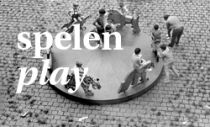
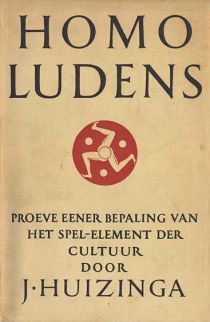
Johan Huizinga, 'Homo Ludens'
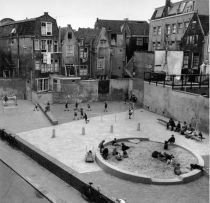
Aldo van Eyck
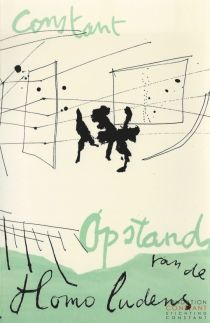
Constant, 'Opstand van de homo ludens'
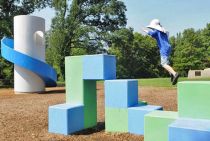
Isamu Noguchi
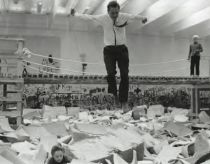
Palle Nielsen
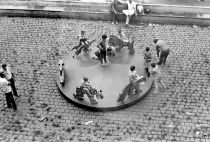
Lina Bo Bardi
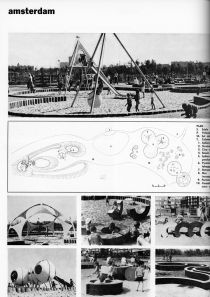
Group Ludic, Amsterdam
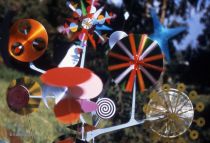
Charles and Ray Eames
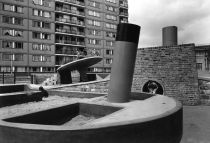
Assemble, 'Churchill-Gardens', 1956
foto: John Maltby RIBA Library Photographs Collection
foto: John Maltby RIBA Library Photographs Collection
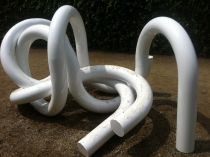
Nils Norman, 'Informal play', Kassel
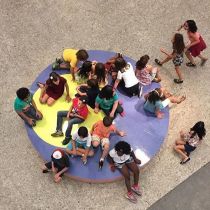
Céline Condorelli, Conversation Piece, Sao Paolo, 2016
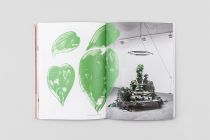
Céline Condorelli, 'bau bau'
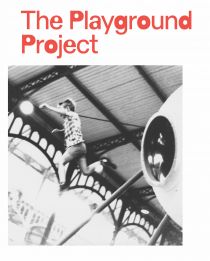
The Playground Project
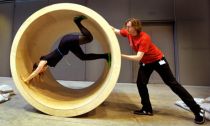
'Bodymotionspacesthings' by Robert Morris
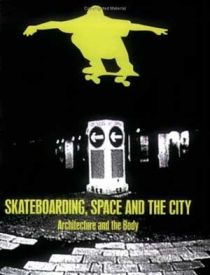
'Skateboarding, Space and the City' by Iain Borden
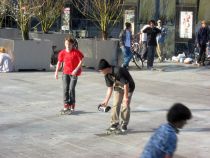
Skateboarding op het Spuiplein, Den Haag
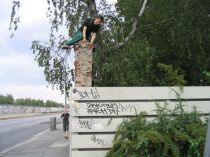
Tour de Fence
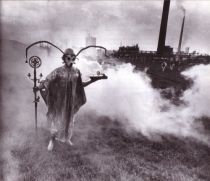
De Bestorming van het Onmogelijke
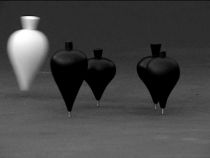
Miguel Angel Rios, 'Fuera de Foco'

Speel je stad
foto: Renske van de Steeg / design: De Nieuwe Studio (Janneke Hendriks en Erla van der Pauw)
foto: Renske van de Steeg / design: De Nieuwe Studio (Janneke Hendriks en Erla van der Pauw)

















